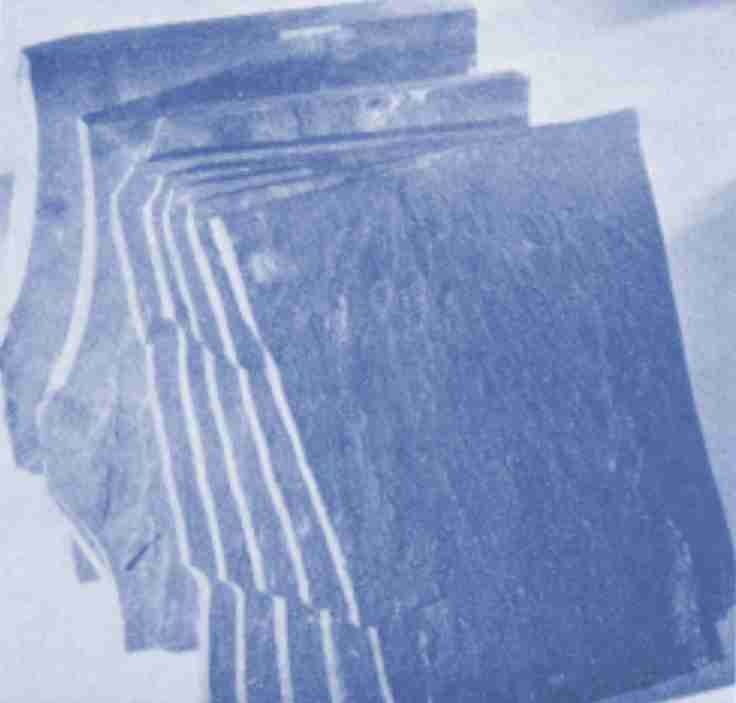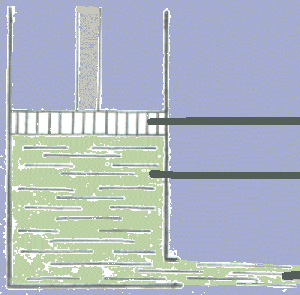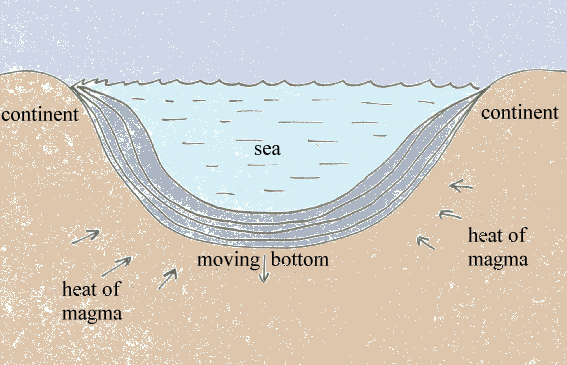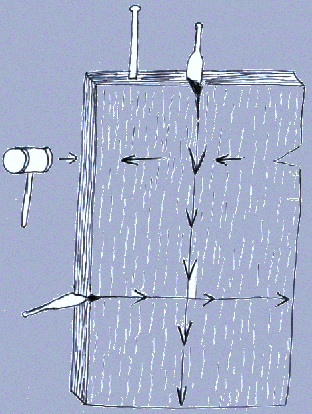| THE ORIGINS AND PROPERTIES OF SLATE |
| Origins :
The formation of slate A tropical sea The example of the basin of Châteaulin/Kastellin |
 |
Shale is clay hardened and laminated that can't be shaped any more. The clay deposited in sediments is compressed by the mountains building forces. That's the way clay become shale. It's possible to recreate the same process with experiments carried out in a laboratory. |
 |
piston
clay shale (laminated) |
|
This fact explains that fossils are found deformed in shale and that shale is found in mountainous regions (basin of Kastellin/Châteaulin for example). When it can be split into sheets it is used for roofing : that's slate. * adapted from Lukian Kergoat, "Geologiezh"
|
|||
There's several kinds of slate in our country :
The same one as in Angers (France) from the south to the Black Mountain, formed in the Silurian and those of the basin of Kastellin/Châteaulin formed in the Carboniferous period that can be transformed into thin slates.
Others like the ones found in the hills of Arrée, which are called "maen-menez" (mountain slate) are harder to split.
The erosion of the uplands near the Ordovician sea brought huge amounts of siliceous elements, mica and feldspar silts that are origin of Angers slate which is found right up to Gourin.
![]()
![]() The example of the basin of Châteaulin/Kastellin
The example of the basin of Châteaulin/Kastellin
Let us have a look now at the recipe concocted by the nature in the cauldron of the synclinal that became the basin of Châteaulin.
300 millions years ago, in this synclinal where the sea was, sediments of sand and clay were deposited. These beds were deeply buried under miles of materials that compressed them.
The heat of the magma and pressure modified their composition : crystallised again, clay became shale.
In the middle of the Carboniferous period (290 millions years ago) sedimentation stopped in the basin.
 |
During the Hercynian orogeny Brittany's mountains rose up and the metamorphic rocks reappeared nearer to the surface. Intense pressures crumpled and laminated the shale. They are the cause of cracks in the shale mass which make extraction of slate very dangerous. However, on this account that slate can be split into thin sheets.
The first quality of slate is the cleavage, that is, it splits into thin sheets along a plane, called the cleavage plane which is perpendicular to the pressures applied on the rock during the metamorphism.
Pillaring is done along the grain, along a plane at right angle to the cleavage plane where the stone is harder. It's possible to divide it with a "bouc", a broadfaced chisel embedded in a notch made with a saw. According to the kind of stone the dressing goes on with wedging across the grain or with breaking down (striking with a large beetle on the opposite side to a notch made with a saw).
When it is extracted, slate has a modulus of elasticity close to that of copper. This flexibility, necessary for splitting, dissapears when it dries up.
|
pillaring
splitting along the grain |
|||
|
blows to break down
wedging
|
 |
notch
|